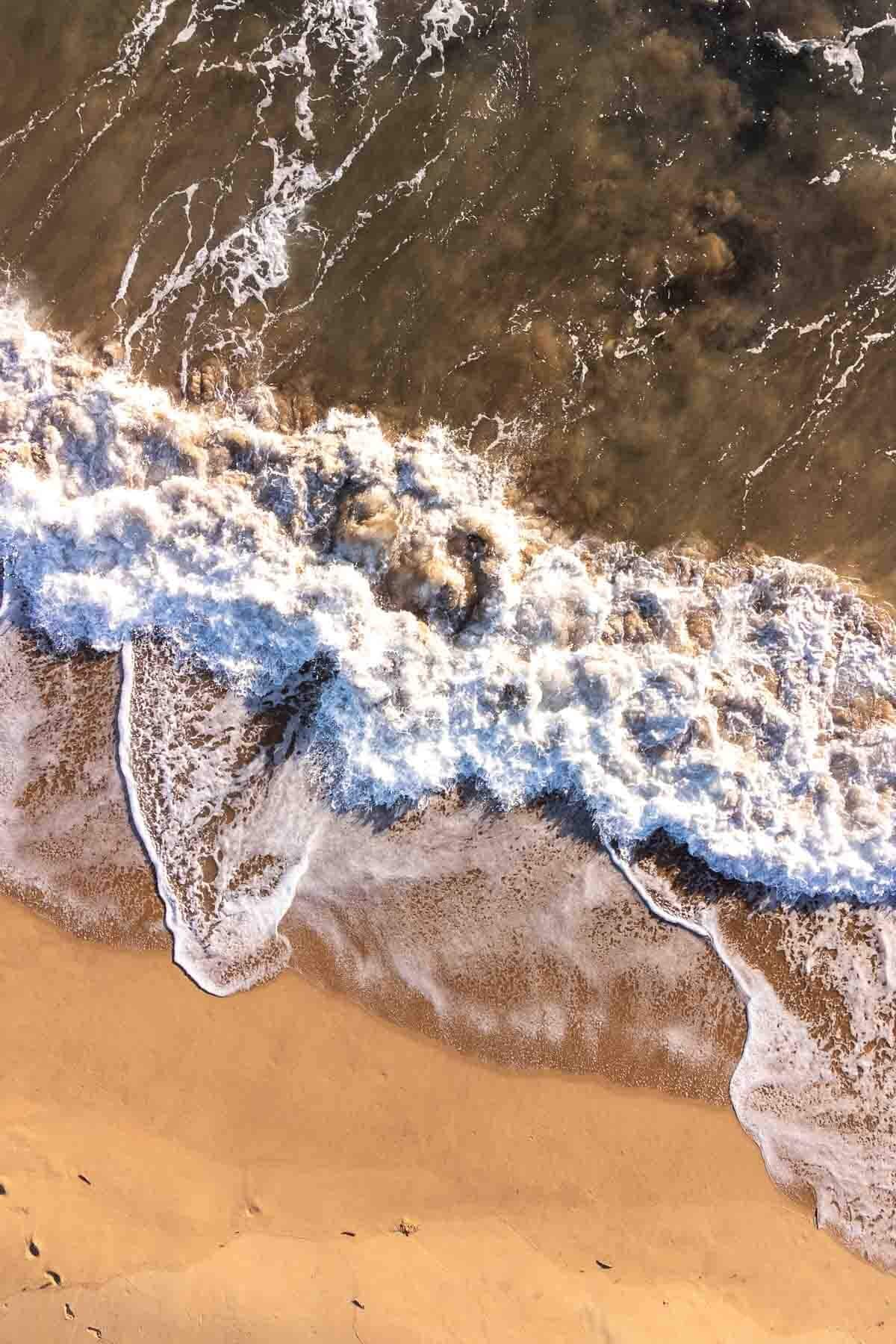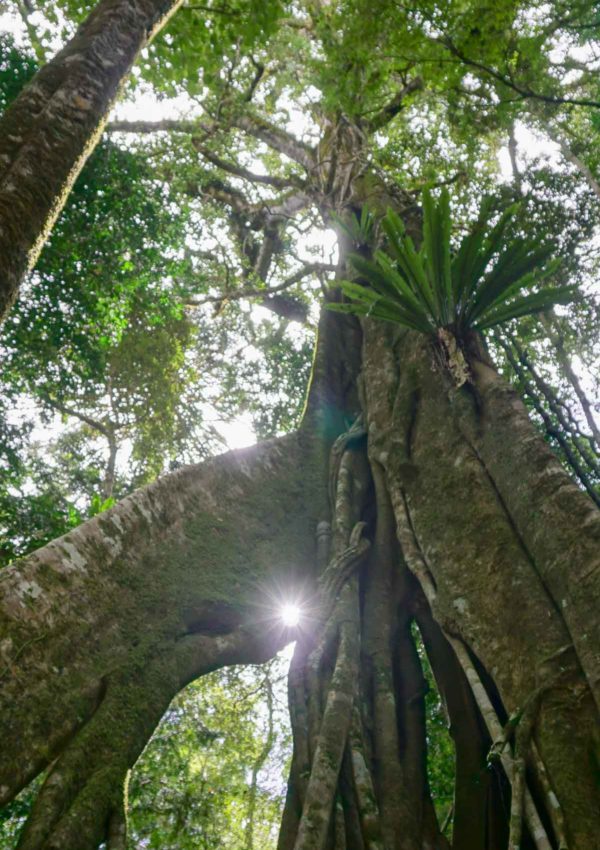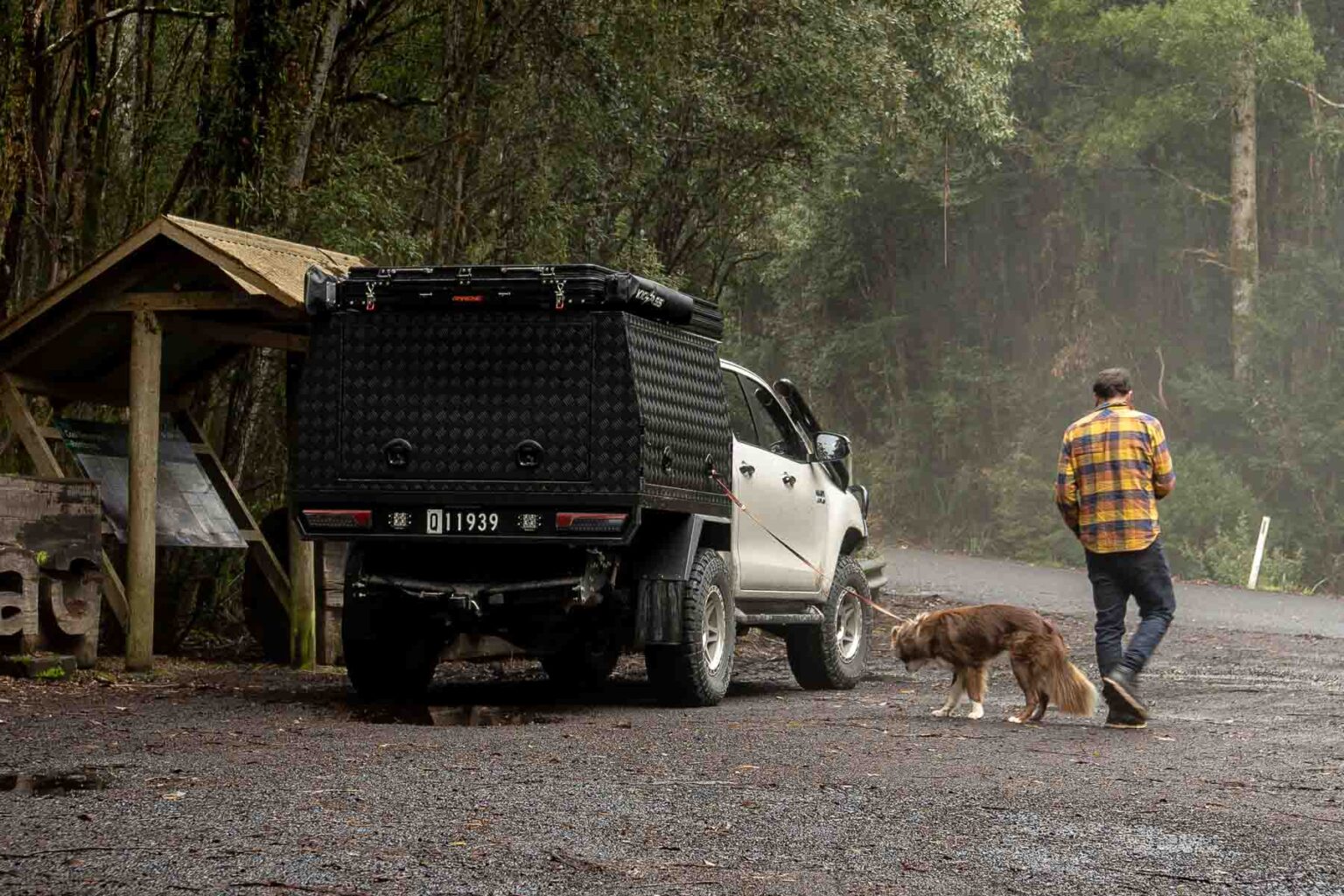One of the best parts about living in Queensland is the access we have to some of the most incredible stretches of pristine coastline in the world.
Driving up and over the 4WD entry point to Double Island Point, you don’t really know what awaits in front of you until you’re there, cruising down a stretch of endless beach with nothing but ocean to your right, and cliffs and dues to your left.
It’s when I visit places like this that I’m reminded that yeah, I’m pretty lucky to live in Australia.

Double Island Point, or DI as it’s known, is a place famous for those looking to experience some of the best that the great outdoors has to offer. It’s a place that attracts all sorts of people looking for incredible camping, fishing, surfing and 4WDing as well as some of the most picturesque locations for day trips, BBQs, jet skiing and hiking.
Double Island Point is the coastal headland just north of Noosa in Queensland, within the Great Sandy National Park. There are a couple of ways to get there, but whatever way you choose you’ll need to have a 4 wheel drive and a bit of experience and preparation for beach driving.
Along the beach you’ll also find a 15 kilometer stretch of sand where camping is permitted known as the Teewah Beach camping area. Simply find a spot above the tideline, nestled into the dunes and the trees and set up camp to the sound of the waves crashing.

Table of Contents
Planning a trip to Double Island Point
Double Island point is only accessible by high clearance 4 wheel drive vehicles so it’s important that you plan your trip accordingly.
If, like us, you are planning to camp at Teewah Beach, then you must be fully self-sufficient as there are no facilities within the camping area except for a few large skip bins. Yes there is a 4WD garbage truck who has without a doubt the best route of any garbo. Please make sure to use these provided bins or take any rubbish out with you.
What you need to bring with you will entirely be dependent on your own preferences, but as a starting point you’ll need something to sleep in like a tent or swag, a chair and table, a stove for cooking along with your cutlery, utensils and plenty of food and drinking water.
Don’t forget a sleeping bag and some warm clothes as while the days in the sun are warm, the nights can get quite chilly with that ocean breeze. You can also bring some firewood for a campfire, but in very windy conditions these can be tricky to keep roaring.
One of the most crucial things you need to plan for whenever driving on the beach is the tide. Our plan was to arrive on DI on Sunday morning, at around 8-9am to catch the low tide. This would ensure we had enough time to drive down the beach on the hard sand and would have less of a risk of getting stuck in either soft sand or salt water, neither option would be great.
Check the tides and try to plan your arrival and departures within two hours either side of low tide.

In terms of preparation, the next most important thing is making sure you have the gear for the situation. As this trip requires beach driving, there are a few key pieces of equipment that are going to help you out.
Things like Maxtrax and a long handled shovel to dig yourself out of the sand if the worst happens and you do get stuck are going to be key. Also having a tyre pressure gauge for letting the air out of your tyres before driving onto the beach is going to make things a whole lot easier for you.
However all the gear in the world isn’t going to prepare you for knowing how to drive to the conditions. If you’ve never driven on the beach before my best advice is to not go alone and rather find some mates who are experienced and can help you navigate the specifics of beach driving. They’ll also be able to pull you out if you do end up stuck.

For us, part of planning was making sure our car and camping setup was suited for the trip. This was our first time to DI and for the trip we decided to take the plunge and finally purchase an aluminum canopy for the back of the ute.
Comfort when camping comes down to preparation and the benefit of having the canopy was that it allowed space for everything we needed to take and all of our gear was secure inside and protected from the elements (and the sand), plus our roof top tent is nice and secure on top.
Finally, there is no phone service at the camping area so before you head over make sure to download things like maps, Spotify playlists, and a few episodes of your current Netflix binge just in case of a rainy day, or in our case a cold and extremely windy day. And let me tell you, one of my favorite moments of the trip was escaping into the tent out of the wind, getting snuggly under the covers, watching TV and listening to the sound of the ocean.

Getting to Double Island Point
The most common route to DI is either from Rainbow Beach or Noosa Northshore along the Cooloola beach drive, a great stretch of beach that also acts as a highway, connecting the two places.
If you’re travelling north from Brisbane you’ll head up the Bruce Highway following the directions to Noosa. Once you’ve turned into Noosa you’ll need to follow the signs towards Noosa North Shore where you’ll need to take the car ferry at Tewantin. It’s a short trip that takes just a few minutes, but the queue particularly on the weekend can be long and you may find yourself waiting a while. Once on board, you’ll need to make sure you’ve got some cash to pay the $8 one way fee.
When looking at the best way to get to the Teewah beach camping ground I found the Queensland Parks website had the most reliable information. As phone service is pretty much non-existent at DI, I highly recommend taking a screenshot of the directions from their site and keeping them on hand.
Once you get on the beach at Noosa North Shore, you’ll need to travel about 20 km until the signs indicate you have reached the camping zone. This is a stretch of about 15 km and you can camp in any of the designated spots along the water, nestled into the dunes. My personal favourite spots have a nice flat grassy area and some big pandanus palms to sit under and watch the waves crash.
If you’re travelling from the other direction and enter the Cooloola beach drive from the Rainbow Beach end, then you’ll have a slightly shorter drive before reaching the other end of the camping area.

What to see and do
DI is the perfect place to relax under the shade of a pandanas palm tree and listen to the sound of the ocean with an icy cold beverage. I took this recommendation a little too far however and on day one of our trip I ended up falling asleep in my chair and unfortunately when I woke, I was no longer in the shade, nor was I wearing sunscreen…so take this as my public service announcement and slip slop slap before relaxing.
But apart from swimming in the cool, clear ocean and relaxing next to it, there are a few other must do activities when at DI.
Rainbow Beach
Rainbow beach is the closest town so if you need to get ice or resupply, or simply grab a cup of coffee, then this is where you are going to want to head.
You can also stop in at the pub for some food and a beer.

The Carlo Sand Blow
A visit to Rainbow Beach isn’t complete without a visit to the Carlow Sand Blow. This is a unique sandmass covering 15 hectares that is popular mostly because it looks completely out of this world.
From the carpark, you take a short strong through the forest before walking out onto the sand which seems to stretch out infinitely before you.
I highly recommend coming early for 2 reasons. Firstly, the sand can get HOT and there is no cover once you’re out there, so it’s best to visit before the sun has had time to ramp up. Secondly as I mentioned this is a fairly popular spot and you’re going to want to miss the crowds.
We arrived at about 8am and mostly had the place to ourselves, but by 9 when we were walking out, the car park was starting to fill up.

The Lighthouse
If you continue driving along the beach, eventually you will get to the point, and you wont be able to drive any further. Park the car, far enough away from the water and make sure to note the tide, then set off for a short, steep walk up onto the headland towards the lighthouse.
This walk to the lighthouse is only accessible from the track from the beach, so without a 4WD you can’t visit it, making it just that little bit more special when you do.
Make sure to take water and wear sun protection as the walk can get quite sunny, but the views from the top are absolutely stunning and well worth the effort.

To get to the other side of the headland, you’ll want to take the Leisha Track which will lead you towards rainbow beach, where you can drive towards town and marvel at the brightly coloured cliffs where the area gets its name.
This is a great area for day trips with perfect, calm swimming conditions in the crystal clear water.

So, how much does it cost to stay?
Double Island Point is located within the Great Sandy National Park, so you’ll need some permits from QLD Parks before you head there.
In total to stay at DI for 2 people we paid:
- Vehicle Permit: $34.10 (valid for 7 days)
- Camping Permit: $40.50 (3 nights)
- Vehicle Ferry: $16.00
Total: $90.60 for 2 people for 3 nights
Obviously this doesn’t count food or any vehicle or fuel costs but you can see that by camping you can stay in some beautiful places without needing to break the bank.

Overall, Double Island Point is one of the most beautiful locations in South East Queensland, perfect for long or short getaways when you need some time away from the hustle of daily life.
Once you’ve been, you’ll understand why this is a spot that draws people back time and time again.





Leave a Reply